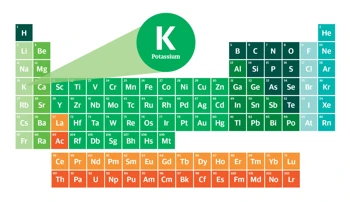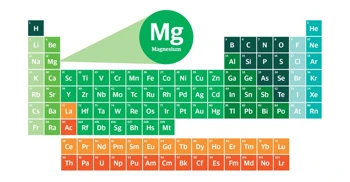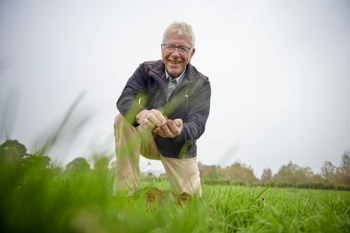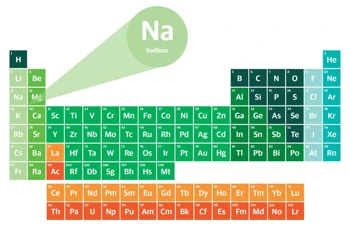News & Advice

Elementary essentials #3: Potassium (K)
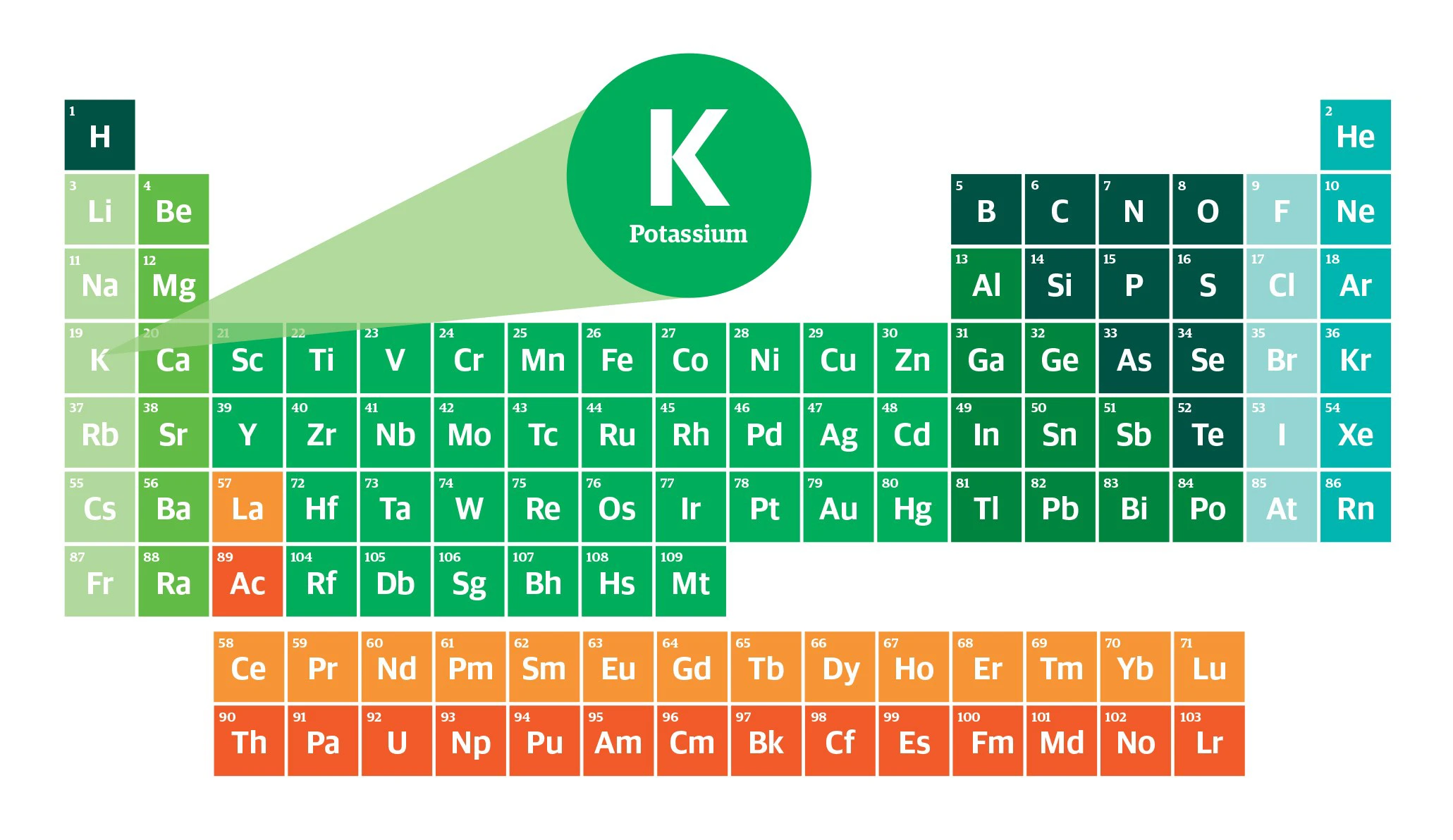
The metallic element potassium (K) is the 19th element in the periodic table and is one of the 19 elements essential for life in all higher plants and animals on planet Earth. Potassium makes up about 2.6% of the earth’s crust and is the seventh most abundant element in the crust. The human body contains about 0.2% K, the eighth most abundant element in the body.
An early method of extracting K salts was by placing ash of burnt wood or tree leaves in a pot, adding water, heating and evaporating the solution. The resultant salts were called potash. Elemental K does not occur in nature because of its violent reactivity with water and oxygen.
Potassium metal was first isolated in 1807 by Sir Humphry Davy who used electrolysis on molten potassium hydroxide. Davy named the metal potassium, derived from the word potash. Other scientists at the time proposed the name kalium for Davy’s potassium, hence the symbol K is used to represent the element potassium.
Potassium salts such as polyhalite and sylvite form extensive evaporite deposits in ancient lake bottoms and seabeds. Today, the principal source of potash is mined in Canada, Russia, Belarus, Kazakhstan, Germany, Israel, the US and Jordan. The largest deposits ever found lie 1,000 metres under Saskatchewan in Canada, where several large mines have operated since the 1960s.
Why is K essential?
- In plants, K is required in large amounts for proper growth and reproduction. It is considered almost as vital as nitrogen for plant nutrition because:
- Potassium regulates the opening and closing of stomata, regulating the gaseous transfer of CO2 and water as well as enhancing photosynthesis
- It triggers activation of important biochemical enzymes for the generation of adenosine triphosphate (ATP), which provides the plant with energy
- It plays a role in the balancing of water and salts in tissues and cells (osmoregulation)
- It facilitates protein and starch synthesis
- It activates enzymes responsible for specific functions.
In humans and animals, K functions in the intracellular fluids, the same as sodium (Na) does in the extracellular fluids, which is to:
- Maintain water balance, osmotic pressure and acid-base balance
- Activate enzymes
- Help metabolize carbohydrates and proteins
- Regulate neuromuscular activity (along with Ca)
- Help regulate the heartbeat.
The vital role of K in agriculture
The discovery by Justus Liebig in 1840 that K is a necessary element for plants and that most soil types lack sufficient K, caused a steep rise in demand for K salts. The K containing wood-ash initially used as fertiliser was replaced by mineral deposits containing KCl (potassium chloride or sylvite), which was discovered in Germany in 1868. Today, agricultural fertilisers consume 95% of global K production, and about 90% of this is supplied as KCl. While most agricultural fertilisers contain KCl, potassium sulphate (K2SO4) is used for chloride-sensitive crops.
Potassium fertilisers are necessary for growing food because:
- Most soils globally do not contain enough K to support global food production
- Most natural K-bearing compounds e.g. granite contains 5% K, are insoluble and not available to plants
- Continual cropping, where a large proportion of the harvested plant is removed, depletes soil K reserves
- Modern agriculture depends upon fertilisers to replace the K lost at harvest, which ranges from 0.5% to 4% of the harvested weight of crops.
While most New Zealand soils have relatively low mineral fertility to support modern agriculture, some soils in both the North and South islands, particularly recent alluvial and pallic soils in the Manawatū, Canterbury and Southland, often contain significant reserves of potassium minerals such as K feldspar (orthoclase) and glauconite (mica).
These K minerals can release K sufficiently to supply plants without the requirement of additional K fertiliser. However, it should be considered that eventually these mineral reserves are likely to be exhausted and K fertiliser additions will become necessary as K is removed in plant and animal products when sold off the farm, as well as transferred to non-productive areas of the farm through urine.
Environmental impacts
At present, while K is relatively mobile in soils and can be leached to ground or surface water, this element is not recognised as causing any environmental issues. However, the principles of the 4Rs (right place, right time, right rate and right product) for K fertiliser application should still be followed.

